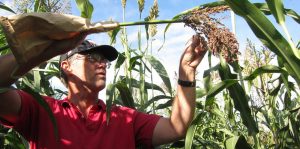 Crops that don’t need to be planted every year can reduce soil erosion and nutrient runoff, but currently have lower yields. These researchers and businesses are working to fix that.
Crops that don’t need to be planted every year can reduce soil erosion and nutrient runoff, but currently have lower yields. These researchers and businesses are working to fix that.
In 2000, noted crop breeder Stan Cox was weary of the Sisyphean task of incorporating new disease resistance traits into wheat varieties. Fumbling to explain his malaise to a colleague, he recalls typing, “Don’t worry, I’m not going to do something crazy like work for the Land Institute.”
At the time, the Land Institute — a nonprofit that develops alternative farming practices they hope will displace destructive, industrial monocultures — was pursuing what many considered a quixotic endeavor: working with wild plants to create perennial varieties of wheat, legumes or sorghum. Such perennial crops could be harvested for multiple years without the need to cultivate the soil. By maintaining root systems year-round, there would be less soil erosion, more soil carbon and less fertilizer making its way into waterways— a problem that leads to harmful algal blooms and coastal dead zones.
Thirty seconds later, Cox deleted that sentence and instead wrote an email to Land Institute founder Wes Jackson, asking if he had any open positions.
“There was a time in the 1980s, when these efforts were in their infancy, that a lot of seasoned agronomists rejected the idea outright,” says Tim Crews, the Land Institute’s research director. Why, the thinking went, would anyone essentially start over at the dawn of agriculture to create perennial varieties of conventional crops using wild material — especially when it would take decades to match modern yields? Crews, rather, turns that on its head and questions the destructive impact of modern food production instead.
Originally published by Ensia




